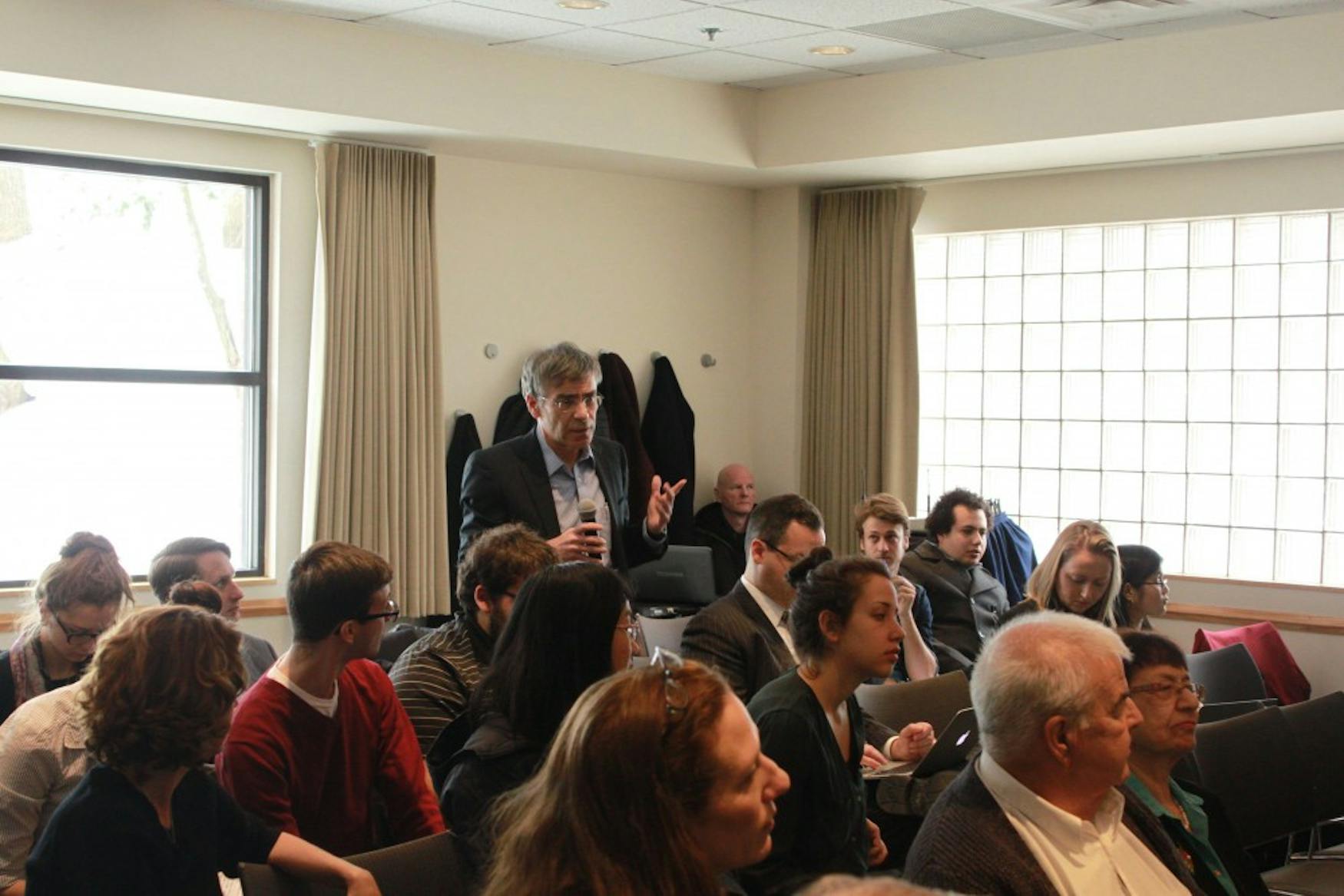Experts share thoughts on Responsibility to Protect
Sunday afternoon, as part of the Responsibility to Protect at 10 Conference at Brandeis, three experts on international justice spoke to both the Brandeis community and the public about vulnerable populations and new players in the international arena.
The conference, jointly organized by the Center and the Tami Steinmetz Center for Peace Research at Tel Aviv University, was designed as a forum for scholars to share ideas and experiences about the Responsibility to Protect (R2P) principle, according to the International Center for Ethics, Justice and Public Life website. The R2P principle is a “[recognition] that the international community has a role to play when sovereign states fail to protect their own populations from genocide, war crimes, ethnic cleansing and crimes against humanity,” the website reads.
Moderated by Prof. Chandler Rosenberger (IGS), the event focused on the speakers’ recent publications, which were based off their experiences and insights with R2P.
Prof. Alain Lempereur (Heller) was the first to present his work, which focuses on the intersection of R2P and business. According to Lempereur, R2P is typically government-led, but on certain occasions, if the government fails in its task, “businesses [should] become a temporary substitute for state intervention.”
“Corporations can cultivate ethical behavior through corporate design,” Lempereur said, suggesting that companies set up protocols and safety sanctuaries. Lempereur concluded by stating that in emergency situations, “R2P trumps business as usual.” Christen Broecker, associate director of the Jacob Blaustein Institute for the Advancement of Human Rights, spoke about potential new actors in R2P. She told the audience she was specifically interested in the “growing interaction between U.N. Human Rights architecture, [the United Nations Human Rights Council] and its peace and security architecture, [the UN Security Council].”
Broecker stated that over the past 20 years, the U.N. Human Rights architecture has grown and that they are increasingly trying “to play another role in the R2P framework … trying to identify when pillar three [on genocide and war crimes] is triggered.”
Broecker also identified four cases in which the U.N. Human Rights mechanisms attempted to uncover instances of R2P failure, including in Côte d’Ivoire, Libya, Syria and the Democratic People’s Republic of Korea. According to Broecker, the success of invoking R2P in each of these cases varied, but she said she believes that the U.N. Human Rights mechanisms have succeeded in “demonstrating [a] willingness to push … [the] U.N. to internalize R2P” and in a “willing[ness] to make use of R2P language to appeal to the Security Council.”
The third speaker, Timea Spitka, a Sophie Davis Post-Doctoral Student in Gender, Peace and Conflict Resolution at Hebrew University, spoke about when R2P becomes relevant during instances of gender-based war crimes. Spitka began by noting that until recently, R2P did not mention women in its language and was not very “gender-friendly.” For these reasons, she said, many feminists and women’s rights activists have historically been against R2P, though recent years have brought about a change in opinion on the principle. “R2P is like a little baby, and it needs a lot of work … and you have to get rid of [the bad aspects], but let’s try to keep the little baby,” Spitka said.
Spitka also said her focus is on the international community in hopes of “reaching a consensus on a ‘red line’ in terms of gender related war crimes, the crossing of which is international responsibility … to protect.”
Specifically citing the “naming and shaming” campaign, which she believes has been effective in some areas of women’s rights, Spitka argued that “R2P is a tool that [has] strengthened norms [current red lines] used for the protection of civilians—including women.”



Please note All comments are eligible for publication in The Justice.